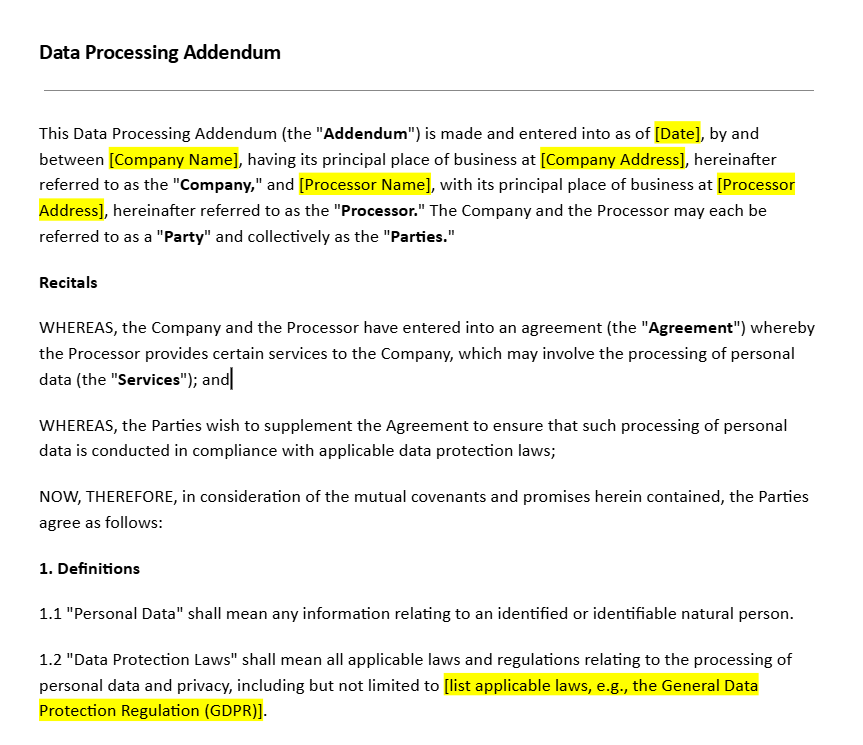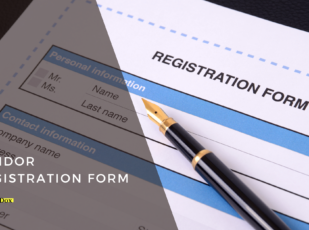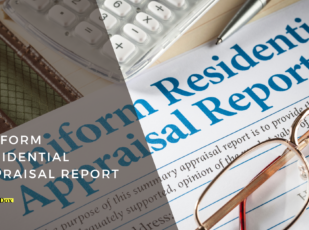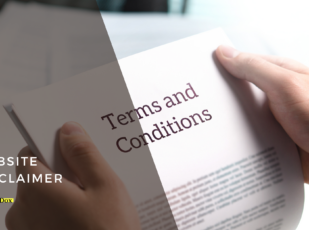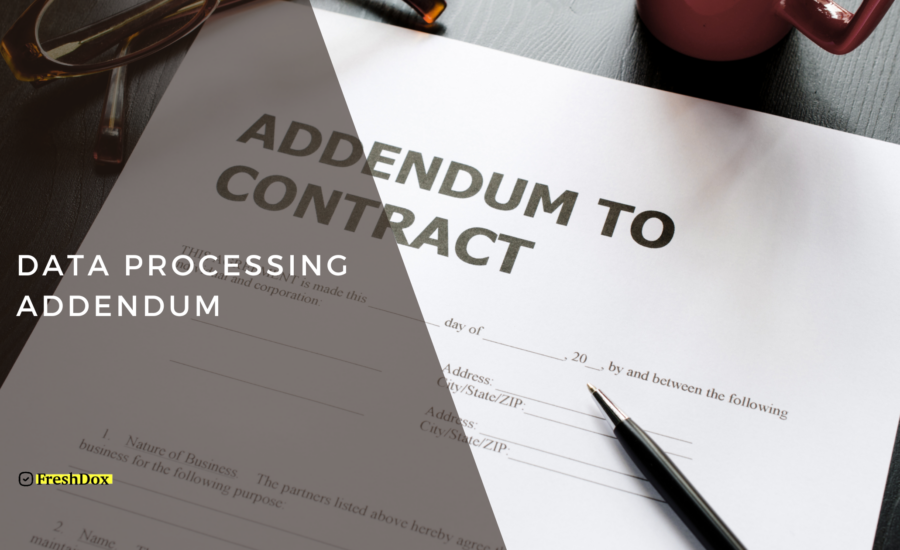
Data Processing Addendum Template
6 Downloads
IT and Media
February 17, 2025
Sayantani Dutta
Organizations dealing with sensitive information must navigate through compliance regimes that prescribe in detail how information can be processed, moved, and stored. A Data Processing Addendum (DPA) forms part of this arrangement.
It governs a data controller and a data processor’s relationship, with a view to compliance with relevant privacy laws regarding data protection, including the General Data Protection Regulation (GDPR) and the California Consumer Privacy Act (CCPA).
This article is a summary analysis of a DPA, outlining its most prevalent uses, key provisions, and terms that companies must apply in operations.
Understanding the Data Processing Addendum (DPA)
A data processing Addendum (DPA) is a legally binding, written Addendum defining the terms between a data controller and a data processor for processing a customer’s personal information. The DPA establishes specific terms for processing operations, and both parties will comply with applicable privacy laws for protecting data.
This structure provides transparency and limits processing to that data particularly consented to for the purpose of processing. A DPA must include the technical and organizational measures a data processor undertakes to safeguard customer personal information.
The inclusion of an explicitly defined security incident response mechanism will ensure any breach of personal data will be notified with no unnecessary delay, in compliance with reporting legislation.
As data protection obligations impose strict requirements on the processing of personal data, failure to have a compliant DPA can result in regulatory fines, contractual claims, and reputational damage.
Organizations transferring information out of the European Union must apply legally approved controls—such as Standard Contractual Clauses (SCCs)—to secure proper international information flows. The DPA defines sub-processing terms, with a requirement for any new subprocessor to comply with security controls and privacy laws.
When engaging a service provider, organizations must ensure compliance with SCCs, binding corporate rules, the Data Protection Act, or other legally approved frameworks in advance of any processing of personal data on behalf of the customer.
Where Is a Data Processing Addendum Applied?
Organizations that have individual customer information under care regularly utilize third-party service providers to carry out key infosec and data privacy operations, and a Data Processing Addendum is a critical compliance component for the use of the services.
Businesses across industries such as finance, healthcare, e-commerce, and technology utilize DPAs to legally bind their information-sharing Addendums with external providers. Whether a company outsources IT service, stores information in cloud servers utilizes marketing analysis, or processes customer data through a third party, a DPA will have explicit provisions for accountability and minimizing risk.
Regulatory requirements differ with regard to jurisdiction. Every company involved in exporting personal information out of the European Union must comply with Standard Contractual Clauses (SCCs) or alternative security measures approved by the European Commission.
These frameworks coordinate exchanges of information between the EEA, UK GDPR, and Switzerland, providing legal frameworks for safeguarding data privacy. Using sub-processors introduces new issues, most significantly when data crosses borders.
Companies must assess how such subprocessor will treat customer personal information, implement security controls, and comply with applicable privacy laws. Failing to apply a compliant DPA can expose an organization to a competent supervisory authority imposing enforcement actions, and taking legal actions, harming the organization’s reputation.
Key Provisions and Terms in a Data Processing Addendum
A well-drafted DPA forms part of a data governance model, acting as a basis for data privacy, compliance, and operational transparency, it ensures all parties concerned in information processing maintain accountability for their roles.
Subject Matter and Coverage
The terms of the Addendum DPA explicitly describe the subject matter of the processing framework, defining both the role of the data controller and the data processor. It details how personal information will be processed and for what purpose, along with specifying the categories of personal data, and any restrictions placed on its use. This section also defines the duration of the processing arrangement, ensuring data is not stored beyond any legally required or agreed-upon contract terms.
Roles and Responsibilities
The terms of this DPA separate the respective obligations of each party. The data exporter (controller) transmits a customer’s information to a data importer (processor), who carries out processing operations on behalf of the customer in compliance with privacy laws.
The contract must specify the technical and organizational security measures taken by the processor in safeguarding information. A data protection authority, such as an Information Commissioner, can oversee compliance, enforcing transparency in processing activities.
Security Measures
To mitigate risk, the DPA prescribes stringent security controls to be adopted by the data processor. These include access controls and encryption to protect customer personal information from loss and unauthorized access. In the evolving infosec environment, the efficacy of security frameworks needs to be assessed periodically to meet data protection obligations.
If security requirements crop up, then a mechanism for updating data protection authority requirements in terms of emerging risks must be clearly presented in the DPA. Data subject rights and impact assessments can be mandated to evaluate vulnerabilities. For additional clarity, companies should maintain a list of security measures undertaken in the DPA, ensuring reasonable steps to uphold confidentiality obligations.
Subprocessing and Third Parties
If a new subprocessor is engaged, contractual terms apply to their obligations. The data controller is entitled to be notified of the use of additional sub-processors. This approach ensures security for data at all phases in the processing sequence.
The contract must also specify compliance requirements for subprocessors in a manner that complies with applicable data protection laws. When subprocessors act on a customer’s information on behalf of the customer or processor, the DPA will confirm any third parties dealing with information transfers.
Data Subject Request and Rights
The contract must include provisions regarding how the data processor will contribute towards processing access, rectification, restriction, and erasure of individual customers’ personal information. Timelines for request fulfillment must be determined, and the organization must comply with legal response timelines outlined under data protection legislation.
The DPA must also establish clear mechanisms for handling requests from an identifiable natural person, ensuring compliance with privacy regulations across multiple member states.
Data Transfers and Regulatory Frameworks
For transfers of data outside the EEA, DPAs must contain Standard Contractual Clauses (SCCs) or other equivalent measures. Annex I and Annex II of SCCs introduce a variety of legally approved contractual structures for facilitating compliant transfer of personal data.
The transfer must be documented, with assurance that the importer of such data complies with all requirements under applicable laws regarding its secure handling and data privacy processes. In Swiss jurisdictions or the United Kingdom, additional provisions can be required for data protection.
Personal Data Breach Notification
A DPA mandates notification of any personal data breach without undue delay. The data processor will be obligated to notify the data controller and provide full details, including the severity of the breach, compromised customer personal information, and proposed actions.
Along with standard reporting protocols, breach notices could include compromised IP addresses and other sensitive data. Regulatory obligations require documentation of any such transgressions and audits are performed under a qualified supervisory authority.
Data Retention and Deletion
The DPA identifies for how long customer personal information is stored and outlines deletion processes for termination of processing operations. Secure deletion methods must adhere to information protection laws and protect against unauthorized access to residual data. The Addendum must specify whether deletion is permanent or if certain data must be archived for legal purposes.
Governing Law and Resolution of Disputes
The Addendum must have a governing law in case of a dispute. Clause 18 can specify the resolution remedy for aggrieved parties. In international processing, a variety of jurisdictions could apply, and prudent compliance in member countries must be adopted.
How to Write and Implement a Data Processing Addendum
Crafting a data processing Addendum (DPA) involves an in-depth understanding of applicable data protection laws, contractual provisions, and operational issues. Organizations must have a documented mechanism through which to develop and implement a DPA, with all processing of customer personal data in compliance with legal requirements.
The terms of a DPA must leave no margin for uncertainty in security requirements, transmittal of personal data across borders, and respective accountability roles between the parties involved.
Lawyers have an important role in preparing draft DPAs. A DPA template is a starting point, but off-the-shelf documents cannot necessarily address the nuance of specific industries, data flows, and requirements of a specific jurisdiction.
A properly drafted DPA should have explicit definitions, detail types of personal data, and specify obligations for both parties. Hiring legal counsel ensures that no gaps in the DPA will leave the business at risk for liability, penalties for non-compliance, or operational conflicts.
As regulations evolve, companies must gear up for future revisions in their DPA to maintain compliance. Legal departments need to analyze data processing addendum requirements and estimate their effects on cross-border data flows.
Whether the processor is handling customer personal information in Switzerland, the EU, or the United Kingdom, they must ensure that legal frameworks meet national and international compliance requirements. By leveraging a supporting data processing addendum in conjunction with a base DPA, companies streamline negotiations, enhance legal transparency, and document all data protection requirements.
Review the following key elements.
- Define processing activities to avoid misinterpretation of data handling requirements.
- Define roles for end users when working with the data processor, making them accountable for accessing and using customer personal data.
- Outline mechanisms for immediate response to security incidents, including personal data breach notifications and continuation or restoration processes.
- Evaluate legal requirements beforehand, most particularly when utilizing sub-processors or exporting information out of the European Economic Area (EEA).
Ensure that technical and organizational controls maintain compliance with relevant regulatory requirements, safeguarding customer personal information from unauthorized access, loss, and misuse.
Legal professionals assess compliance with Standard Contractual Clauses (SCCs), in most instances a necessity for international transfers of information.
The European Commission periodically revises SCCs, and companies must maintain awareness of changing regulations. Involving legal experts in DPA negotiations strengthens a corporation’s stance by guaranteeing that every term will be enforceable and aligned with business objectives.
When disputes arise, a legally effective DPA lessens the opportunity for miscommunication. Lawyers can advise on emerging legislation, proposing amendments to adapt to new directives from governing powers.
A DPA is a living document, it needs continuous updates to remain in compliance with changes in legislation and industry practices.
Companies should review Addendums with legal professionals at regular intervals to ensure compliance, safeguard customer personal information, and avert costly legal repercussions.
Why You Need a Template for Your Data Processing Addendum
A data processing Addendum is not merely a compliance issue, it defines the way that companies handle customer personal data in a structured and compliant manner. Without clear direction, companies will improperly manage processing operations, and face compliance penalties and security vulnerabilities.
To implement best practices, a template provides a starting point for a well-structured DPA. A template creates a uniform format in compliance with relevant data protection legislation and ensures important provisions are included and addressed in detail.
Organizations are free to adapt these templates to suit their specific data flows, business models, and jurisdictional requirements. By incorporating a template, companies streamline negotiations, reduce uncertainty, and enjoy uniformity in Addendums with a range of service providers and sub-processors.
Whether it involves cross-border processing of personal data under SCCs, or defining technical and organizational security measures, having a documented data processing model ensures compliance.
Companies that move proactively in standardizing DPAs demonstrate a commitment towards safeguarding information, legislative compliance, and operational efficiency in an increasingly complex infosec matrix.
Download a Free Data Processing Addendum Template with FreshDox
Sign up for a free trial of FreshDox and download our Data Processing Addendum Template. It’s designed by industry professionals and fully customizable to your needs. Whether you’re working with a corporate firm or small business, you can customize and edit the Addendum to your needs and then download it in Word or PDF formats.
You get 7 days to check out our catalog of professionally designed templates for business when you sign up for a Basic or Premium account. Basic accounts get three free downloads a week, and Premium accounts get unlimited downloads, and there’s no obligation to subscribe after the trial period ends.
Popular searches:
Related Templates
Discover more templates that align with your needs and preferences.

Ready to Sign Up?
Sign up for FreshDox.com’s 7-day trial and discover why so many individuals and businesses trust us for their legal document template needs.
- Cancel any time
- 7-day free trial
- From 300+ Customer Reviews

